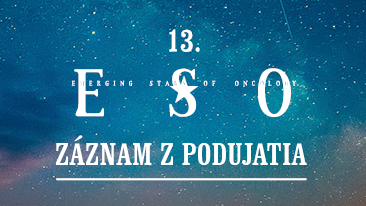Pro zobrazení tohoto obsahu je třeba být přihlášen.

Pro zobrazení tohoto obsahu je třeba být přihlášen.
Detail videa
Pro zobrazení tohoto obsahu je třeba být přihlášen.
20. 1. 2021 | CZE
Prof. MUDr. Karel Smetana, DrSc., MUDr. Lukáš Lacina, Ph.D., Mgr. Michal Kolář, Ph.D
Autor: Prof. MUDr. Karel Smetana, DrSc.
Incidence of malignant tumours is increasing worldwide and necesitates novel therapeutical options and, in turn, detailed diagnosis. The diagnostic dataset is based on the combination of conventional iochemistry, histology, immunohistochemistry and molecular features of tumours. Genetic profile of the patient can be used to personalize the care and employ targeted or biological therapy. This approach was revolutionized in recent years by introduction of the so called ‘-omics’ methods, which enabled to profile mutations and expression activity of the tumour mass at whole-genome scale.
It is accepted that tumours are heterogeneous. Beside the cancerous populations, they contain noncancerous cells such as immune cells and cancer-associated fibroblasts. These populations interact in many ways and create a malignant ecosystem. This ecosystem is an essential biological phenomenon and its understanding is crucial for succesfull therapy. However, the ‘-omics’ methods until recently analysed the tumour as a bulk tissue and neglected its inner structure.
The introduction of single-cell sequencing can overcome the handicaps of the bulk tumour analyses. Every single cell in the tumour ecosystem can be characterised individually and transcription activity of its genes can be determined. Cell types and their subpopulations can be subsequently identified using robust bioinformatic analyses, which are made possible due to massive improvement in computational resources.
In this lecture, we present our understanding of the heterogeneity of normal dermal fibroblasts under the influence of melanoma cells in 3D in vitro model of heterogeneous spheres. Using single-cell sequencing, we categorized fibroblasts into three main groups based on the activity of (i) genes encoding extracellular matrix, (ii) ID genes and (iii) genes coding for proinflammatory factors and influencing TGF-β signalisation.

27. 11. 2025 | SLO
klinická onkologie, imunoterapie onkologických onemocnění, Urologie, nukleární medicína
MUDr. Daniel Evin, PhD.
ESO Tour 11. 11. 2025

27. 11. 2025 | SLO
klinická onkologie, imunoterapie onkologických onemocnění, Urologie, Karcinom prostaty
MUDr. Jana Obertová, PhD.
ESO Tour 11. 11. 2025
25. 6. 2025 | CZE
klinická onkologie, Karcinom plic
Central European Lung Cancer Forum 2025




12 | 6 | 2018
Vážená paní, vážený pane,
vstupujete na stránky, jejichž jedna část je určena lékařům a druhá nelékařským zdravotnickým pracovníkům. Obsah stránek pro lékaře není vhodný pro širokou veřejnost a nelékařské zdravotnické pracovníky, neboť obsahuje odborné informace o léčivých přípravcích, včetně reklamních sdělení, která se k nim vztahují. Tyto informace a sdělení jsou určeny výhradně odborníkům dle § 2a zákona č. 40/1995 Sb., tedy osobám oprávněným léčivé přípravky předepisovat nebo vydávat. Více informací zde.
Prosíme, zvolte jednu ze dvou následujících kategorií a na základě této volby Vám bude nabídnut obsah určený pro Vaši kategorii.
Jsem lékař/lékařka
Prohlašuji, že jsem se s výše uvedeným poučením seznámil(a), že jsem odborníkem
ve smyslu zákona č. 40/1995 Sb. o regulaci reklamy v platném znění, čili osobou
oprávněnou předepisovat léčivé přípravky nebo osobou oprávněnou léčivé přípravky
vydávat.
Jsem nelékařský zdravotnický pracovník